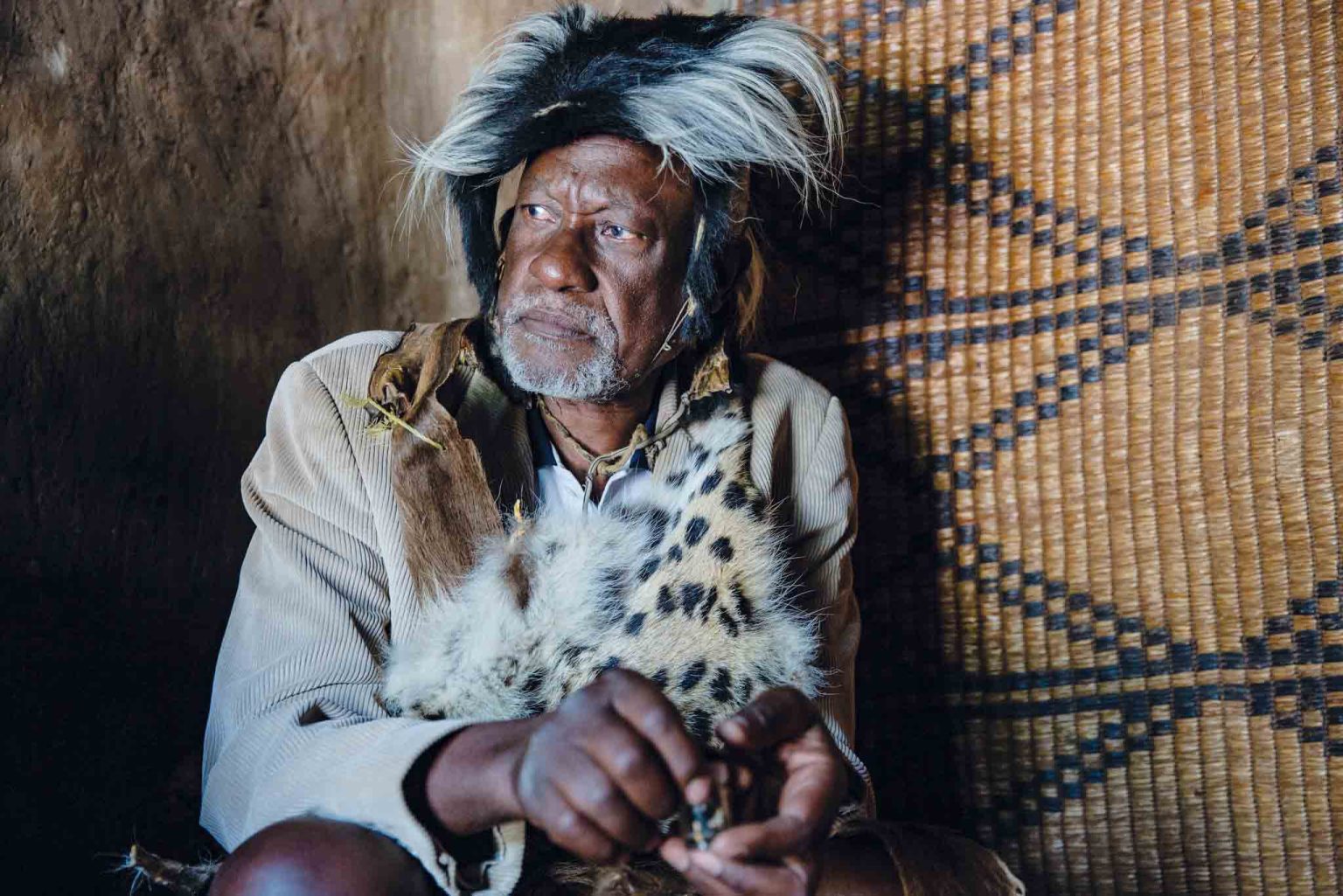Africa-Press – Lesotho. Last month, the Likhoele Ha-Sebusi community in Mafeteng woke up to a gruesome scene of two men who had been brutally murdered and had their private parts hacked off.
The body parts were nowhere to be seen.
These men were aged between 23 and 32 years. The deceased were from the Likhoele area in Mafeteng.
The police immediately launched investigations into the dreadful incident. The investigations have since led to the arrest of two suspects – who are believed to have been the masterminds behind the ritual murder.
Four other men were later arrested in connection with the murder. The four suspects are Tankiso Masupha, 21, Mpho Masupha, Neo Sebusi, 24 and Thato Matlakala, 29. They were remanded in custody when they appeared in court.
They are due to appear in the Mafeteng magistrates’ court next Tuesday.
Police spokesperson Senior Superintendent Mpiti Mopeli said two suspects were from Ha-Qobete, a kilometre away from where the motionless bodies of the two men were found lying in a shallow ditch.
But the suspects were picked up by the police in Thaba-Bosiu where they were hiding.
SSP Mopeli said the suspects fled the scene upon hearing a tip-off that the police were after them.
He said the suspects are biological brothers aged 17 and 21 years old respectively.
He said the suspects told them that they gave the body parts to a traditional doctor aged 29 who is from the village of Ha-Qobete.
SSP Mopeli said the suspects said they also handed over a pistol they used to kill the men to the said traditional doctor.
The traditional doctor was also arrested by the police.
“The man was found in possession of some body parts and a pistol,” SSP Mopeli said.
And those body parts were found tied on a tree on the mountain of Maboloka in the district.
The traditional doctor had hidden them there.
Further police investigations revealed that the sangoma was going to mix the parts with some herbs.
In particular, he was in need of a white man’s private parts, not the ones for a Mosotho man to make a stronger mixture of herbs.
Because the 21-year-old suspect is an illegal miner in South Africa, the sangoma had asked him to get him the private parts of the white-man because he was working close to white men.
SSP Mopeli said the suspects told them that they took advantage of the two men because they had a chance to rip off their parts easily.
While still on the outlook for the parts of the white man, they could at least hand over something to the sangoma.
Police investigations revealed that previously, the deal was that the suspects would be given M15 000 for the parts.
When the ritual murderers brought the parts of the Basotho men, the price dropped to M10 000.
The chairman of Lesotho Traditional Doctors, Malefetsane Liau, said the incident left them shocked.
He said they are yet to find out if the traditional healer is in their books.
“We are going to delete his name from our books if he is a registered traditional doctor,” Liau said.
“We do not need these calibres in our midst,” he said.
Ritual murders have been part of Basotho’s harrowing history and not enough attention has been directed to the crime, according to some researchers.
It only captures the national attention when prominent people are involved.
As early as the 1940s, Basotho were involved in ritual murders. Two Basotho chiefs were hanged on August 3, 1949 after they were convicted for ritual murders.
The two chiefs were hanged in Maseru, the capital of the then British colony of Basutoland, now called Lesotho.
One was Bereng Griffith Lerotholi, the Principal Chief of the Phamong ward in Mohale’s Hoek District in the south of the country.
The other chief hanged was Gabasheane Masupha, the Principal Chief of ’Mamathe’s ward in the Berea District to the north-east of Maseru.
The crime for which Bereng and Gabasheane were hanged for was murder, but it was not murder of the ordinary kind.
At first it was known as ritual murder; later, more appropriately, as medicine or liretlo murder.
Parts of the victim’s body, liretlo, were cut away, usually while he or she was still alive, for the purpose of making medicines which, it was believed, would strengthen those who made use of them.
In this case, according to the prosecution, the two chiefs had enlisted the help of at least a dozen of their subjects to kill a man called ’Meleke Ntai.
If they had been acquitted they would have had to stand trial for an earlier murder, committed in 1946.
The victim then was a man called Paramente, who was caught at night as he came out of his lover’s hut.
The cases of Chiefs Bereng and Gabashane drew the attention of the world to Basutoland, not only because the murders were so gruesome, but because they involved two of the highest chiefs in the land and because they seemed to be part of a rising tide of murder that was threatening to engulf the whole country.
There had been occasional reports of medicine murders since 1895, but until the (mid-20th century) they had been too few to disturb the colonial authorities.
From two in 1941, however, the number of reported murders had risen to 20 in 1948, the year in which Bereng and Gabashane allegedly carried out the second of their murders, and the numbers of instigators and accomplices involved amounted to several hundreds.
The above historical piece is from the Medicine Murder in Colonial Lesotho: The Anatomy of a Moral Crisis by Colin Murray and Peter Sanders.
But medicine murders in Lesotho have not stopped.
Isaac Rasebate Mokotso, a researcher at the National University of Lesotho (NUL), wrote about seven years ago that there was an urgent need to pay attention to these murders.
Even though it seems there has been a decline in the number of witch killings and ritual murders from different sectors of Basotho society, these phenomena has recently reemerged and it is worrying and requires an immediate response, Mokotso said.
In November 2019 the High Court heard a case in which one Lebohang Pitso of Ha ’Matsa in Qacha’s Nek was facing two counts of murder.
Pitso was alleged to have murdered a 90-year-old ’Mamoloko Seeiso and her seven-year-old grandson.
Testifying in court, Sergeant Chale Moloinyana of Sekake Police said they first got a report from the Chief of Ha ’Matsa that two people had been murdered in the village.
After they arrived at the scene, Moloinyana said the police found two bodies lying in a pool of blood.
He said they discovered that their throats were slit and part of Seeiso’s scalp had been peeled off.
Investigations led to the arrest of Pitso by the Semonkong police.
Pitso led the police to Carltonville at an informal settlement called Khutsong in South Africa.
On the roof of the shack he claimed was his home, Pitso pointed the police to a scalp pinned to a knife.
He said the scalp belonged to Seeiso.
He allegedly confessed that the particular knife together with one that was on the table was used to slaughter the old woman and her grandson.
Last year double ritual murderer Lehlohonolo Scott was sentenced to life imprisonment without the possibility of parole while his sickly mother, ’Malehlohonolo, was given a suspended ten-year sentence.
’Malehlohonolo has since died due to her illness.
High Court judge Justice Teboho Moiloa found them guilty of murdering fellow Koalabata residents, Moholobela Seetsa, 13, and Kamohelo Mohata, 19, in January and June 2012 respectively.
Mokotso, in a paper titled ‘Introducing Basotho Traditional Religion in Lesotho Schools,’ says the origin of ritual murder or medicine murder in Lesotho is not known.
Mokotso says there are two theories of the origin of ritual murder (Liretlo in Sesotho) in Lesotho.
One theory is that liretlo is not indigenous to Basotho culture but had been imported from the Zulu culture.
Protective medicine (Lenaka) which liretlo is mainly for, had already been in use in Basotho culture, but it was made up of animal parts instead of human parts.
The other theory is that liretlo is as ancient as the Basotho nation, to the extent that it is not possible to trace its origins.
However, Mokotso says it has been noted that Moshoeshoe had lenaka with human parts ingredients even though those parts were obtained from corpses of enemies killed in wars.
He says occurrences of liretlo were recorded in the early colonial period in 1895 in which about six cases were reported.
In a 1992 study, he says, liretlo became a Lesotho ‘epidemic’ and reached a peak in the years between 1940 and 1955 in which over 120 cases were reported during this period.
The Lesotho police have not, until now, classified murder crimes on whether they are medicine murders, gang-influenced, or witch-hunt triggered.
The police just record it as murder and start investigating a murder case.
Lack of the classification of murders explains why the Bureau of Statistics does not have any information on how and why people are murdered; it just records the number of homicides.
This also explains why the Lesotho parliament has not come up with a law that guides the nation on how to deal with these kind of murders.
Earlier this year, the chairman of the social cluster in parliament Fako Moshoeshoe told thepost that for them to make laws they have to be informed by stakeholders about what is happening on the ground.
For More News And Analysis About Lesotho Follow Africa-Press






